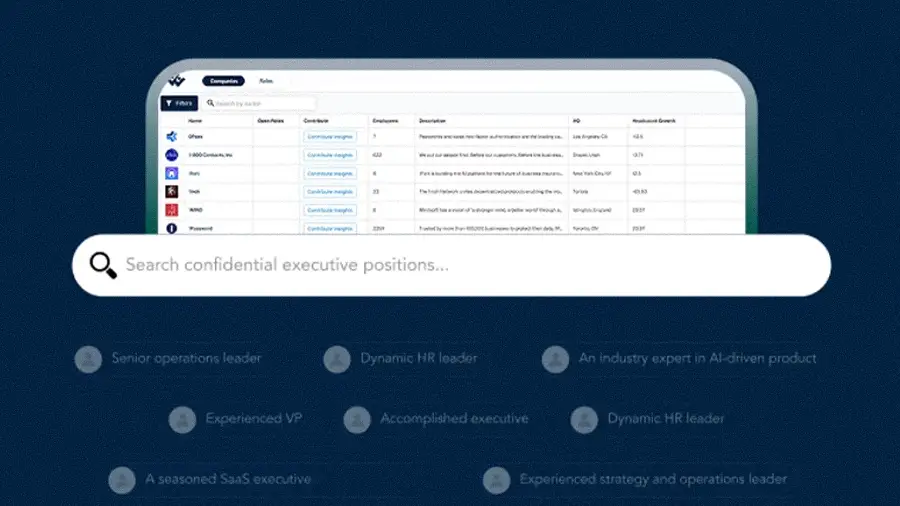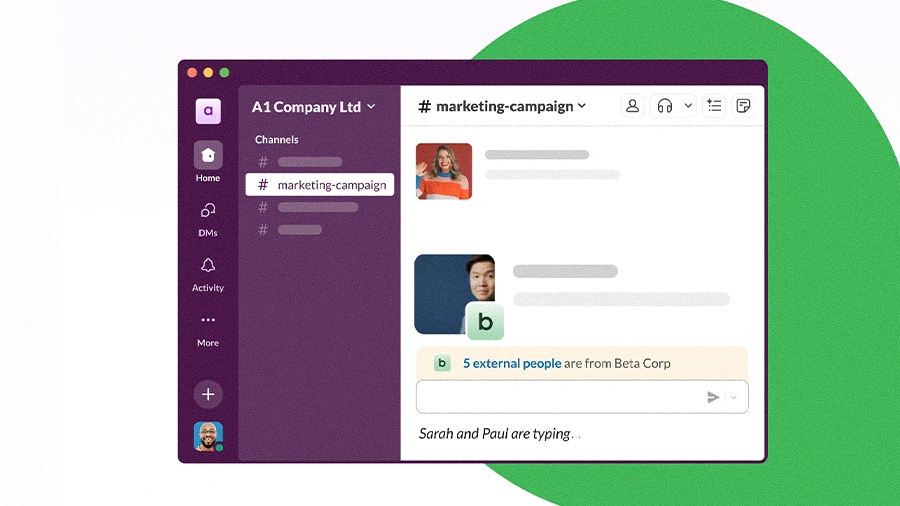Why corporate comms needs empathy and intent to deliver tough news, not just transparency

Key Points
Heightened employee stress has made delivering tough messages a high-stakes operation, requiring a new approach beyond simple transparency.
Erika Illiano, Managing Partner at Brown & Brown, offers a new playbook for navigating this environment with a more strategic, human-centered approach.
Illiano warns against a “death by a thousand cuts” communication style, instead advising leaders to empower managers, ensure news is actionable, and carefully manage the timing of announcements.
The instinct is often to launch a drip campaign—announce each decision as soon as it’s made in the name of honesty and transparency. But that approach leaves employees wondering if this is one of three, or one of three hundred more changes still to come. It creates a permanent state of disruption and does more harm than good. Sometimes the better path is to pause, so it doesn’t become death by a thousand cuts.

Erika Illiano
Managing Partner
Brown & Brown
Employees today are operating under relentless pressure. Economic strain, social unrest, and political turbulence have pushed stress levels to record highs, leaving little capacity to absorb more bad news. Given that backdrop, leaders and HR must deliver messages with tact and intentionality. Old communication strategies no longer cut it; what’s needed now is a deliberate, empathetic strategy that treats messaging as human experience, not just information transfer.
To navigate this tricky environment, we spoke with Erika Illiano, Managing Partner at Brown & Brown. With decades of experience leading communication strategy at top-tier global firms like Alight Solutions, Aon, and Bank of America, she argued that the old methods of communication are no longer sufficient. To maintain trust in an age of ambient anxiety, leaders need a new strategy—one that starts long before a message is ever delivered.
Illiano laid out a core philosophy that challenges a common instinct among leaders: the desire for immediate transparency. While well-intentioned, she warned that a constant drip feed of negative information, even in the name of honesty, can backfire spectacularly.
Death by a thousand cuts: “The instinct is often to launch a drip campaign—announce each decision as soon as it’s made in the name of honesty and transparency. But that approach leaves employees wondering if this is one of three, or one of three hundred more changes still to come. It creates a permanent state of disruption and does more harm than good. Sometimes the better path is to pause, so it doesn’t become death by a thousand cuts.”
This “death by a thousand cuts” scenario often arises when communication is treated as an afterthought or a problem to be managed rather than a strategy to be designed. The solution, Illiano said, is to bring communicators into the decision-making process from the very beginning.
Beyond the bow: “You need the communicator in the room during the strategy meeting. When decisions are made first and then handed off to be packaged with a bow, the process is already behind. The options considered but not chosen are valuable context that should shape the messaging and give it authenticity. Without that, communicators end up asking 50 follow-up questions to decision makers, ultimately wasting time instead of moving the message forward.”
Once the strategy is set, the focus must shift to the messenger. The most effective communication channel isn’t a platform; it’s a person. Illiano stressed the critical importance of empowering the most trusted relationship an employee has at work: their direct manager.
Arming the front lines: “An individual manager has more influence on an employee’s engagement and retention than any other factor—that relationship is the most trusted. People often say employees leave managers, not companies, and it’s true. That’s why it’s critical to equip managers to deliver messages, especially the difficult ones. Toolkits can make the difference: clear talking points, FAQs, and resources they can point people to when questions arise.”
Equally important is the timing of the message. Illiano offered a simple but powerful filter to determine if it’s the right moment to share difficult news. If the information isn’t actionable, it’s not helpful; it’s just stressful.
The actionability test: “We focus on timing: when an employee can actually learn more, take action, or make a decision. If that’s months away, it’s likely too soon. But if tools are available, like decision-support platforms that let employees model different scenarios and prepare for change, then it’s the right time to communicate. A vague heads-up that more details will come in 90 days isn’t helpful—it only adds stress.”
Even with the right messenger and timing, leaders must carefully manage the “aftershock” of a difficult announcement. The goal is to create a space for productive dialogue, not reactive anger.
The delicate balance: “For major changes, employees need time to absorb the message before a town hall. If they hear difficult news and are forced to process and react in real time, the discussion isn’t productive. Giving people a little space helps, but wait too long and they’ll stew in frustration and show up angry. Striking that balance is critical.”
So what does this new playbook look like in practice? Illiano pointed to a post-acquisition integration where two large organizations were merging and “everything was changing.” It became a masterclass in proactive communication. The CHROs kicked off with a joint roadshow, a visible sign of unified leadership that built trust from the start. They then communicated the communication plan itself, explaining that employees would receive curated content tailored to their legacy company.
“If people received different versions of comms, they weren’t suspicious because we had already explained why,” Illiano recalled. That transparency was reinforced with a “surround sound” campaign featuring a unique brand, posters, screensavers, and a virtual resource hub with tools and live meetings. The result was a seamless transition that demonstrated the value of the strategy. “We got next to zero noise. We got really great feedback on the communication, and people truly felt their hands were held as they moved through the change.”
For major changes, employees need time to absorb the message before a town hall. If they hear difficult news and are forced to process and react in real time, the discussion isn’t productive. Giving people a little space helps, but wait too long and they’ll stew in frustration and show up angry. Striking that balance is critical.

Erika Illiano
Managing Partner
Brown & Brown
For major changes, employees need time to absorb the message before a town hall. If they hear difficult news and are forced to process and react in real time, the discussion isn’t productive. Giving people a little space helps, but wait too long and they’ll stew in frustration and show up angry. Striking that balance is critical.

Erika Illiano
Managing Partner
Brown & Brown
Related articles
TL;DR
Heightened employee stress has made delivering tough messages a high-stakes operation, requiring a new approach beyond simple transparency.
Erika Illiano, Managing Partner at Brown & Brown, offers a new playbook for navigating this environment with a more strategic, human-centered approach.
Illiano warns against a “death by a thousand cuts” communication style, instead advising leaders to empower managers, ensure news is actionable, and carefully manage the timing of announcements.

Erika Illiano
Brown & Brown
Managing Partner

Managing Partner
Employees today are operating under relentless pressure. Economic strain, social unrest, and political turbulence have pushed stress levels to record highs, leaving little capacity to absorb more bad news. Given that backdrop, leaders and HR must deliver messages with tact and intentionality. Old communication strategies no longer cut it; what’s needed now is a deliberate, empathetic strategy that treats messaging as human experience, not just information transfer.
To navigate this tricky environment, we spoke with Erika Illiano, Managing Partner at Brown & Brown. With decades of experience leading communication strategy at top-tier global firms like Alight Solutions, Aon, and Bank of America, she argued that the old methods of communication are no longer sufficient. To maintain trust in an age of ambient anxiety, leaders need a new strategy—one that starts long before a message is ever delivered.
Illiano laid out a core philosophy that challenges a common instinct among leaders: the desire for immediate transparency. While well-intentioned, she warned that a constant drip feed of negative information, even in the name of honesty, can backfire spectacularly.
Death by a thousand cuts: “The instinct is often to launch a drip campaign—announce each decision as soon as it’s made in the name of honesty and transparency. But that approach leaves employees wondering if this is one of three, or one of three hundred more changes still to come. It creates a permanent state of disruption and does more harm than good. Sometimes the better path is to pause, so it doesn’t become death by a thousand cuts.”
This “death by a thousand cuts” scenario often arises when communication is treated as an afterthought or a problem to be managed rather than a strategy to be designed. The solution, Illiano said, is to bring communicators into the decision-making process from the very beginning.
Beyond the bow: “You need the communicator in the room during the strategy meeting. When decisions are made first and then handed off to be packaged with a bow, the process is already behind. The options considered but not chosen are valuable context that should shape the messaging and give it authenticity. Without that, communicators end up asking 50 follow-up questions to decision makers, ultimately wasting time instead of moving the message forward.”
Once the strategy is set, the focus must shift to the messenger. The most effective communication channel isn’t a platform; it’s a person. Illiano stressed the critical importance of empowering the most trusted relationship an employee has at work: their direct manager.
Arming the front lines: “An individual manager has more influence on an employee’s engagement and retention than any other factor—that relationship is the most trusted. People often say employees leave managers, not companies, and it’s true. That’s why it’s critical to equip managers to deliver messages, especially the difficult ones. Toolkits can make the difference: clear talking points, FAQs, and resources they can point people to when questions arise.”

Erika Illiano
Brown & Brown
Managing Partner

Managing Partner
Equally important is the timing of the message. Illiano offered a simple but powerful filter to determine if it’s the right moment to share difficult news. If the information isn’t actionable, it’s not helpful; it’s just stressful.
The actionability test: “We focus on timing: when an employee can actually learn more, take action, or make a decision. If that’s months away, it’s likely too soon. But if tools are available, like decision-support platforms that let employees model different scenarios and prepare for change, then it’s the right time to communicate. A vague heads-up that more details will come in 90 days isn’t helpful—it only adds stress.”
Even with the right messenger and timing, leaders must carefully manage the “aftershock” of a difficult announcement. The goal is to create a space for productive dialogue, not reactive anger.
The delicate balance: “For major changes, employees need time to absorb the message before a town hall. If they hear difficult news and are forced to process and react in real time, the discussion isn’t productive. Giving people a little space helps, but wait too long and they’ll stew in frustration and show up angry. Striking that balance is critical.”
So what does this new playbook look like in practice? Illiano pointed to a post-acquisition integration where two large organizations were merging and “everything was changing.” It became a masterclass in proactive communication. The CHROs kicked off with a joint roadshow, a visible sign of unified leadership that built trust from the start. They then communicated the communication plan itself, explaining that employees would receive curated content tailored to their legacy company.
“If people received different versions of comms, they weren’t suspicious because we had already explained why,” Illiano recalled. That transparency was reinforced with a “surround sound” campaign featuring a unique brand, posters, screensavers, and a virtual resource hub with tools and live meetings. The result was a seamless transition that demonstrated the value of the strategy. “We got next to zero noise. We got really great feedback on the communication, and people truly felt their hands were held as they moved through the change.”




